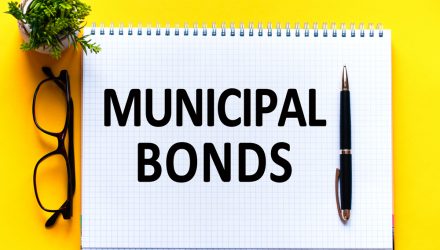Experienced fixed income investors know about municipal bonds. That’s a given. More recently, many have been getting wise to green bonds, or debt issued to fund environmentally friendly projects.
Those concepts meet in the SPDR Nuveen Municipal Bond ESG ETF (MBNE), which debuted in April. The actively managed MBNE is sub-advised by Nuveen. MBNE, which attempts to beat the Bloomberg 3-15 Year Blend (2-17) Municipal Bond Index, is off to an impressive start, as highlighted by $32.29 million in assets under management in just about a month on the market.
That’s an encouraging sign for multiple reasons, not the least of which is the point that bonds of nearly all styles are struggling this year due to interest rate tightening by the Federal Reserve. Importantly, MBNE’s impressive start is relevant because it shows that there’s appetite for the marriage of green bonds and municipal debt.
“The municipal bond market saw another record year for sustainable bonds in 2021, with $46 billion in issuance across the three categories of green, sustainability, and social bonds. This was an increase over the $27 billion in ESG-labeled issuance in 2020,” writes Parametric’s Lauren Kashmanian. “Based on current growth projections for labeled bonds in the municipal bond market, issuance could grow to $60 billion this year. To put these numbers in perspective, sustainable-labeled issuance in the municipal market totaled 9.7% of overall municipal bond issuance in 2021, up from a 5.5% share in 2020. This could increase to about 13% of total projected annual issuance for 2022.”
Home to 94 bonds, MBNE sports an option-adjusted duration of just over five years, meaning that this is an intermediate-term ETF. MBNE’s current yield is 4.38%, according to issuer data. That’s arguably staggering by the standards of traditional muni bond funds, and it far exceeds what investors earn on 10-year Treasuries.
While MBNE only holds 94 bonds, that number could be due to the fund being actively managed and the growth in green muni space.
“The green bond category covers a range of issuers and sectors that continues to expand, including sustainable building projects, wastewater management, renewable energy, climate-adaptive infrastructure, and clean mass transit,” adds Kashmanian.
Last year, green munis accounted for 47% of overall sustainable bond issuance. Spotting sources of growth for green municipal bonds isn’t difficult.
“Green buildings and water-related improvements represented the two largest shares of green muni bond issuance in 2021, each at 33%, followed by public transportation at 20%,” concludes Kashmanian.
For more news, information, and strategy, visit the ESG Channel.
The opinions and forecasts expressed herein are solely those of Tom Lydon, and may not actually come to pass. Information on this site should not be used or construed as an offer to sell, a solicitation of an offer to buy, or a recommendation for any product.

